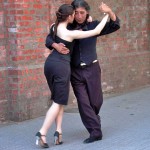
Travels with Julia || Argentina
Read up on travel guides to Buenos Aires and eat your heart out. “Incredible food,” they trumpet. “The city sizzles,” one of them blares. “The South American Paris,” gushed a friend when I told her I was going, comparing its cafes to those of Paris, its fashions to Milano style, its nightlife to nowhere else. Most alluring and most true of all of the city’s seductions is the tango, that sultry dance born in the seamy districts of Buenos Aires and Montevideo, which you might very well find on any street corner today while you are in search of dinner (see my husband’s post about this photo on his blog, Imag(e)ination).
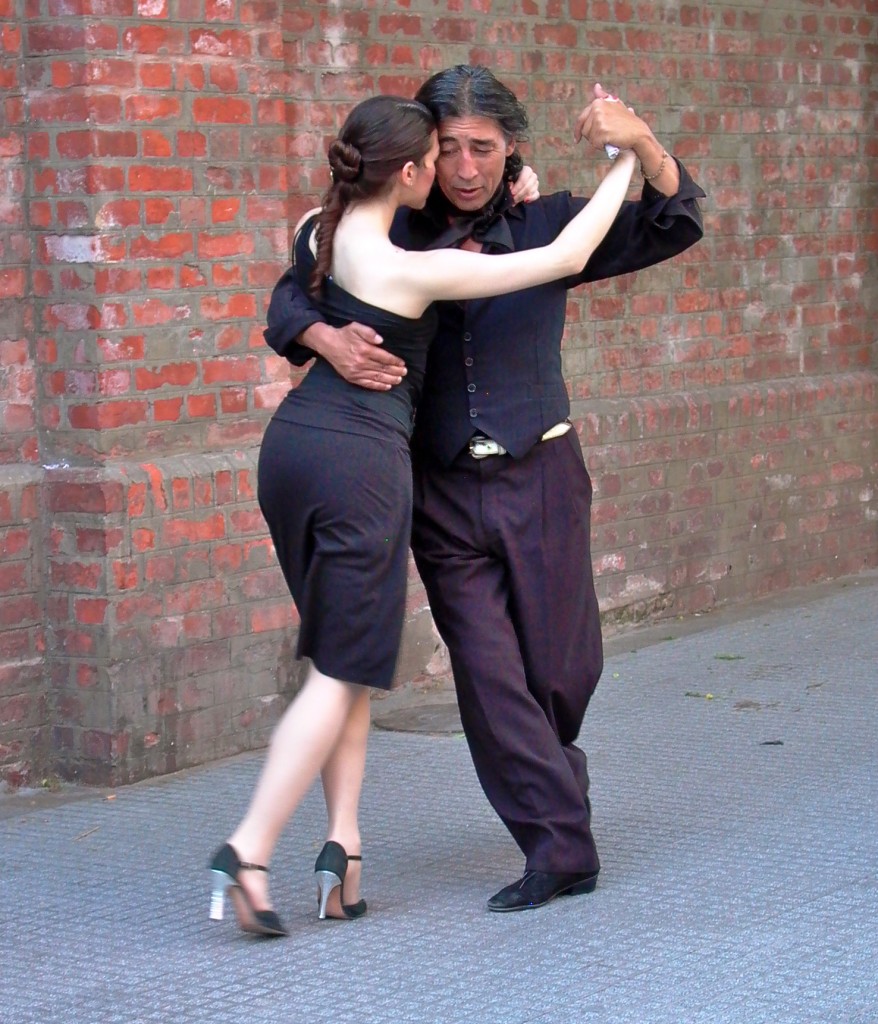
A couple dancing the tango to a boom-box at the walls of Recoleta Cemetery, Buenos Aires. Photo: Nathan Hoyt
So while my family and I were in the city for an extended stay visiting my daughter, who’d landed there for her junior year abroad, we walked the streets every day in search of dinner.
My girls were content to subsist on empanadas, a meal in a pastry envelope fit for the grazing student and the peckish traveler. Probably few people love a good empanada as much as I do (in Sardinia, my mother’s homeland, these moon-shaped pies, a legacy of 13th century Catalan settlers, are called impanade). I could eat them for breakfast, lunch or dinner. But after a few samples procured from vendors all around the city, I gave up. These were not like the succulent versions that Señora Rosenda, Celina’s campesina host mother had made out in the northern countryside, but tough pastries with mediocre fillings. Such is the fate of most pies that are not made in small batches and with a loving hand, whatever their ilk or hue.
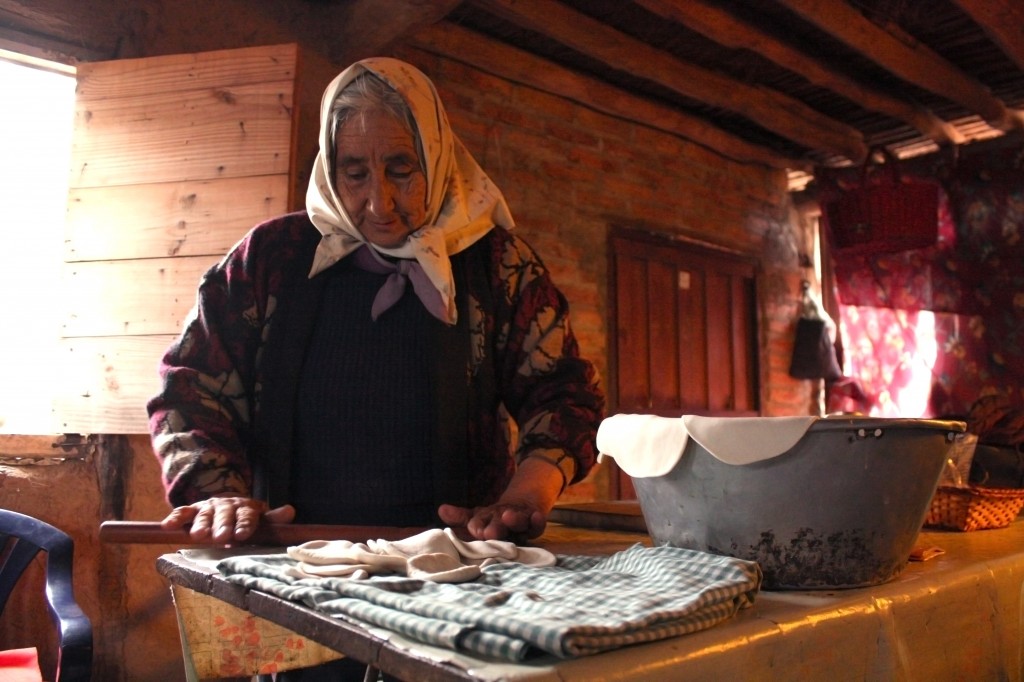
Señora Rosenda making empanadas in northern Santiago del Estero province–alas, a long way from Buenos Aires. Photo: Celina della Croce
So the search for dinner began in earnest. First, a quest for native food, which on the tourist trail is no more and no less than beef and plenty of good Malbec: a challenge for my daughters, transitioning vegetarians, and for me–we all eat red meat sparingly.
From trendy “Palermo Soho” and ragged San Telmo, to swank Recoleta and the glamourous Puerto Madero hotels built for foreign businessmen and visiting plutocrats, the gritty waterside snack shacks and touted parillas of Argentine fame, Celina’s student hang-outs and ethnic eateries, we covered every neighborhood and rode the trains to the outlying suburbs for a gasp of fresh air when we could. Along the way, we saw the real Buenos Aires, slick and raw, modern and decrepit, fat and starving, remembering and amnesiac.
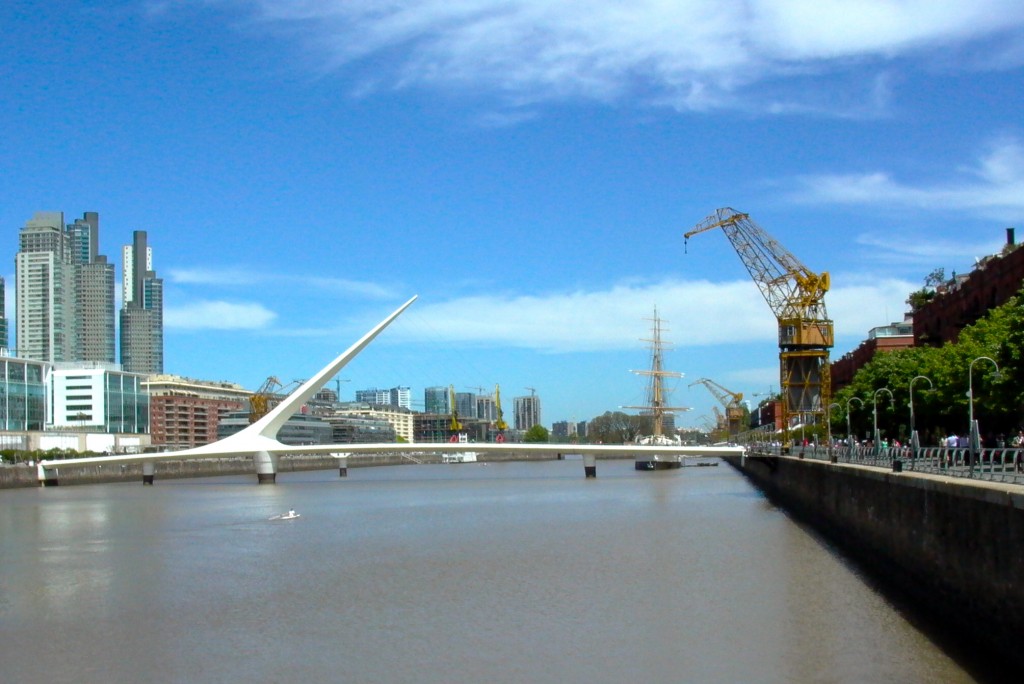
At glitzy Puerto Madero, the Puente de la Mujer, “Bridge of the Woman,” starchitect Santiago Calatrava’s 335-foot-long suspension pedestrian bridge. Calatrava described it as “a synthesis of a couple dancing the tango.” Photo: Julia della Croce
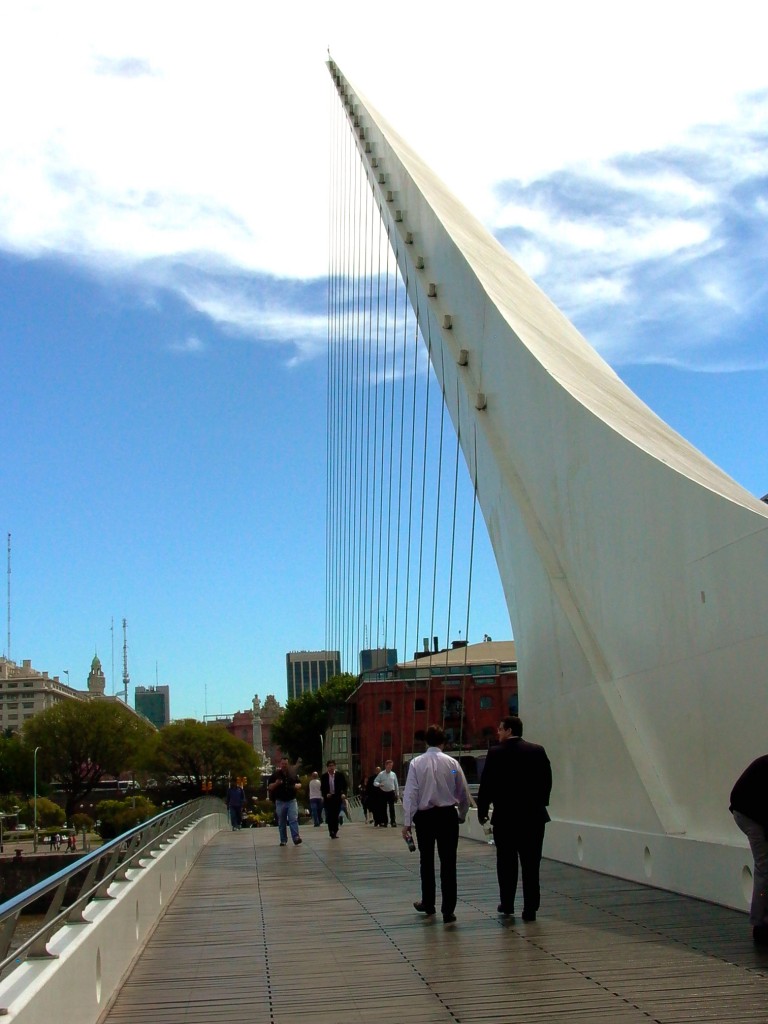
The bridge is built in three parts, one, a single mast with cables suspending a section that swings 90 degrees in order to allow ships to pass underneath it; the two static sections connect to pedestrian walkways on either side. Photo: Nathan Hoyt
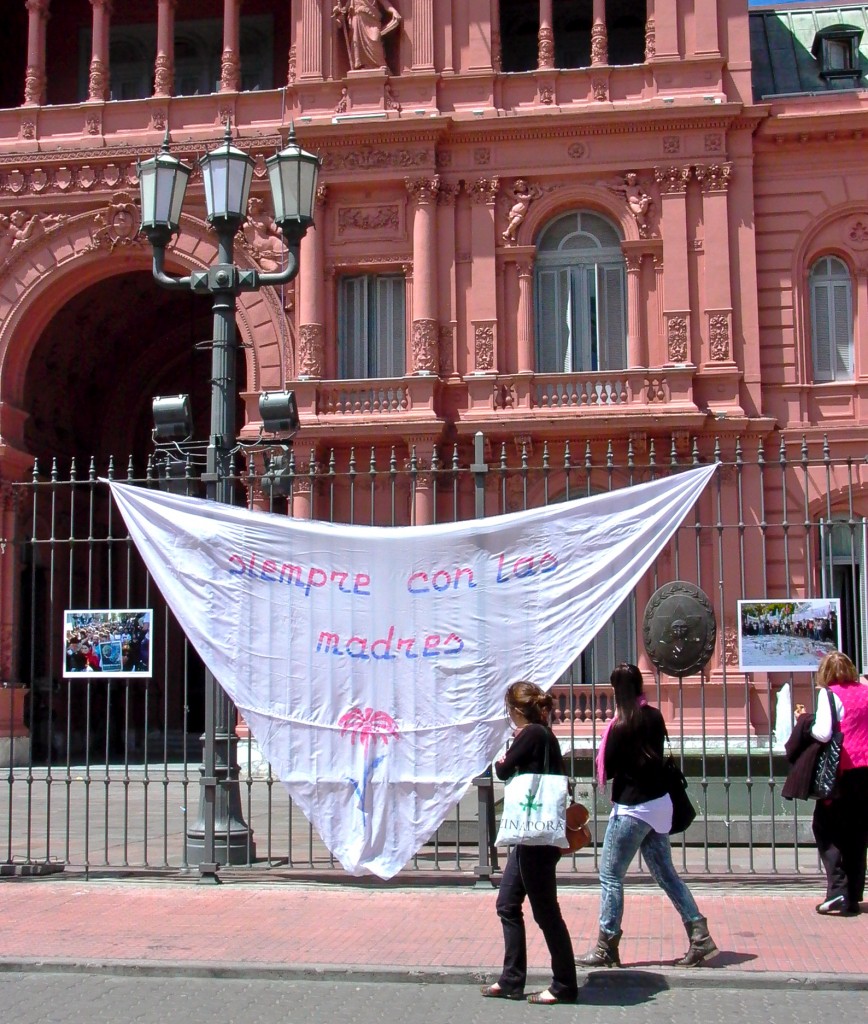
Argentina’s painful past is papered over with tourist publicity. But at La Casa Rosada, the presidential palace, a banner: “The Mothers Always Remember.” Photo: Julia della Croce
The pasta and pizza joints on every block turned out the saddest facsimiles of those iconic Italian dishes that I’ve tasted anywhere; indeed, much to my surprise, anything Italian was only a memory of the real thing (but didn’t Italy empty out its southern and northern regions to Argentina, and with them, their storied cooks in the 19th and 20th centuries?)–not delicious in its own right, like the best of Italian-American food can be.
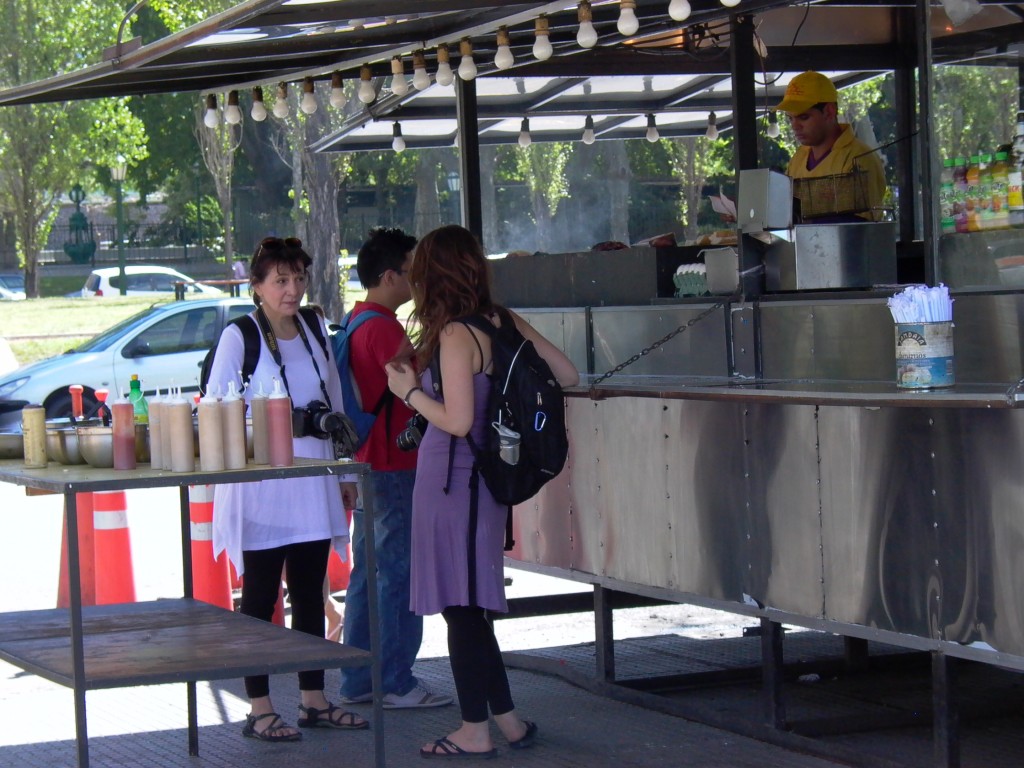
Here we are negotiating some street food at one of Celina’s watering holes. Photo: Gabriella della Croce
We savored good food when we found it, lit on the cafes for pastries and cappuccino, and hit the gelaterie at snack time. Happily, Fabbri, the fabled Italian gelato and confection company recently opened a satellite company in Buenos Aires.
But in the end, I got hungry. The best food, my daughters decided–Italian or otherwise–was home-made. So after working up a good appetite and feasting on the city’s sights, we usually rustled up the makings of dinner from the butcher, the baker, and the greengrocer, and landed in my rental apartment for home cooking-away-from-home.
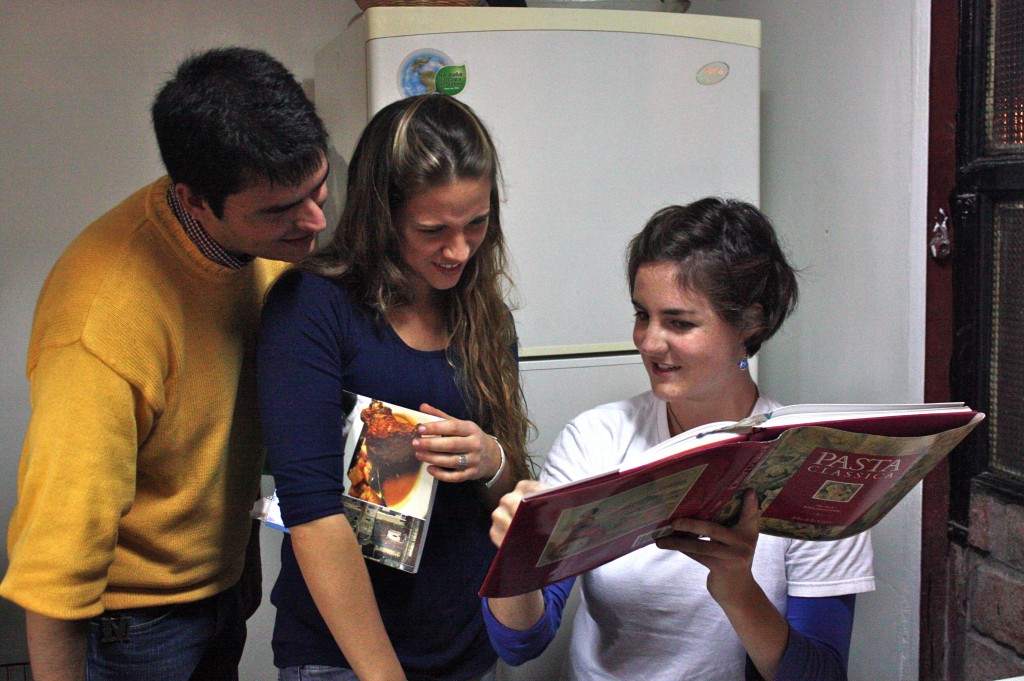
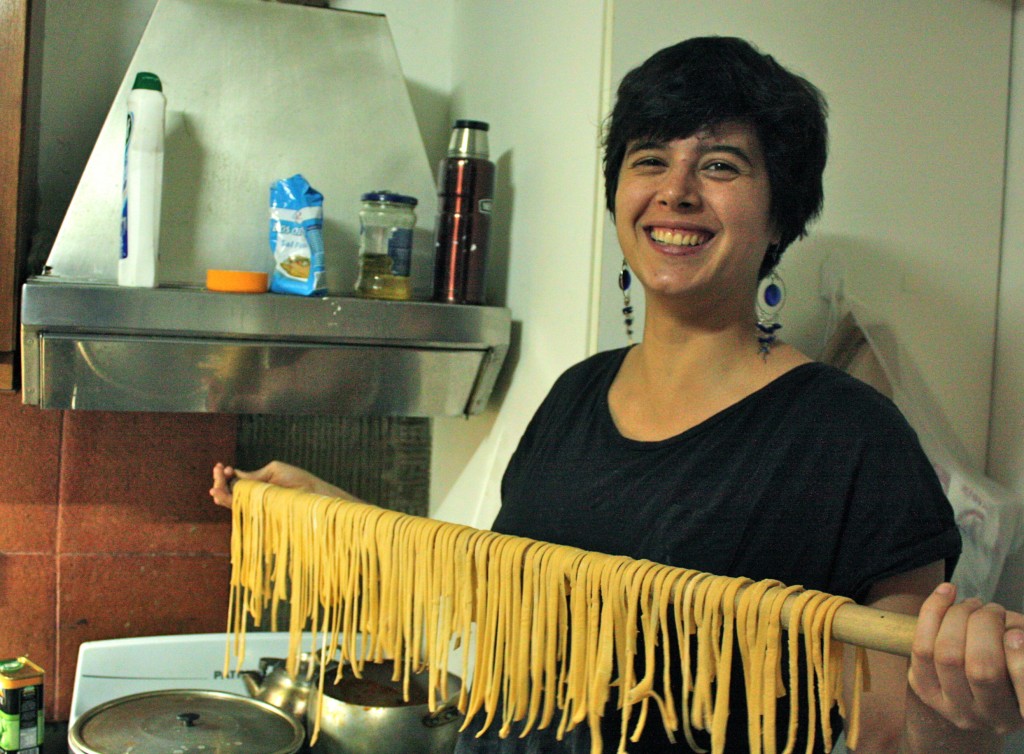
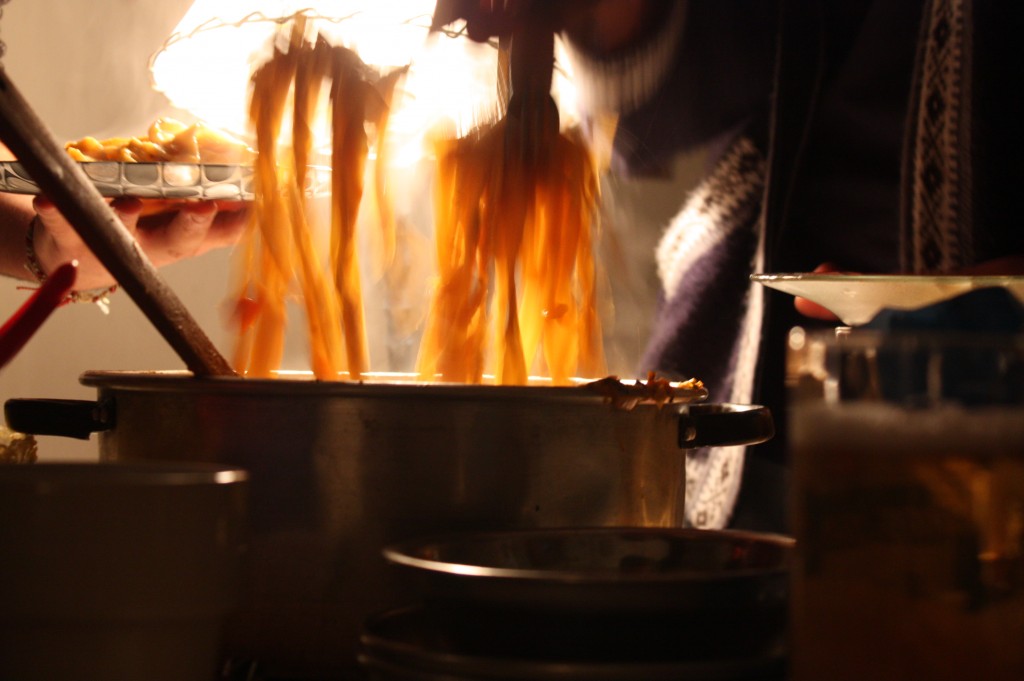 All three images: Making hand-made pasta by Mamma’s book in Celina’s student digs. Photos: Celina della Croce
All three images: Making hand-made pasta by Mamma’s book in Celina’s student digs. Photos: Celina della Croce
But ask me about Buenos Aires and I’ll tell you that the greatest pleasure it offers is tango. Nothing could be more spicy, sizzling, and authentic. Take dance lessons, go to night clubs, or just inhale it on the streets.
If you can’t get yourself some good home cooking while you’re there, here are my well-earned finds:
Brasserie Petanque, at Defensa 596 (San Telmo)–This place has a warm patina, classic, good bistro food, hospitable and relaxed service.
Le Bistrot de Paris, at Libertad 1319 (Recoleta)–Charming, reliable, and informal, lunch or dinner; local and French-inspired dishes.
Cabernet, at Jorge Luis Borges1757 (Palermo)–An upscale Argentine restaurant in a restored colonial-style building with an eclectic menu leaning toward Italian food; elegantly decorated but best of all, you can dine in the lush courtyard scented with overhanging jasmine, cockspur coral, and gardenia.
Don Julio, at Guatemala, 4691, and Gurruchaga (Palermo Soho)–One of the tried and true parilla restaurants considered among the best by in Buenos Aires locals. Legendary for its steak, but don’t miss the sausages.

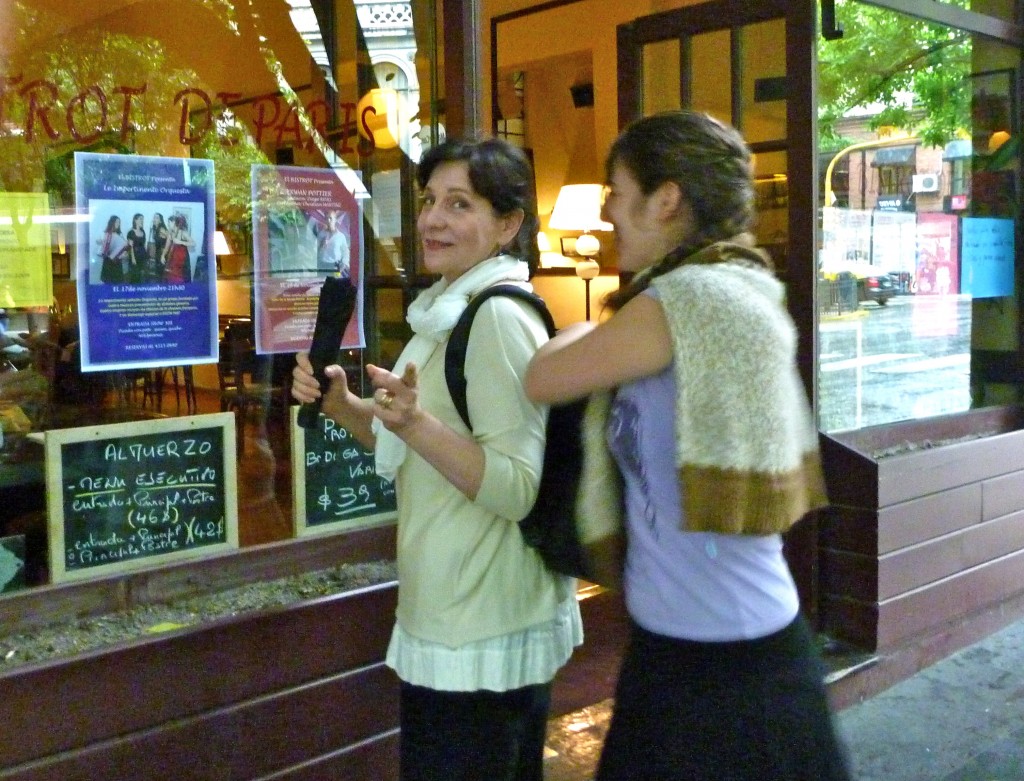
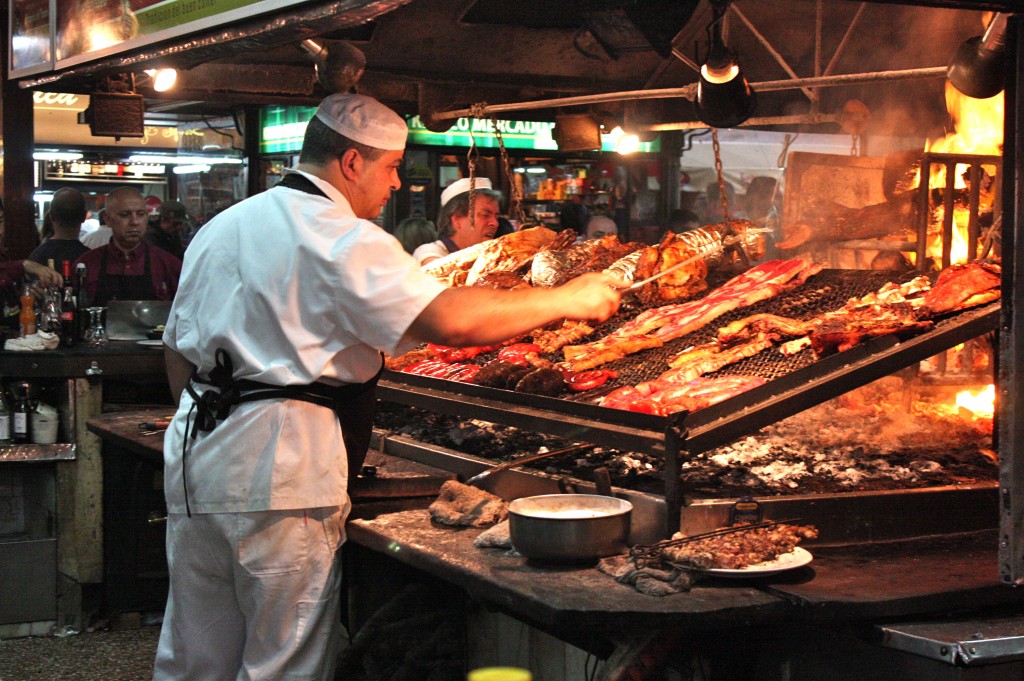
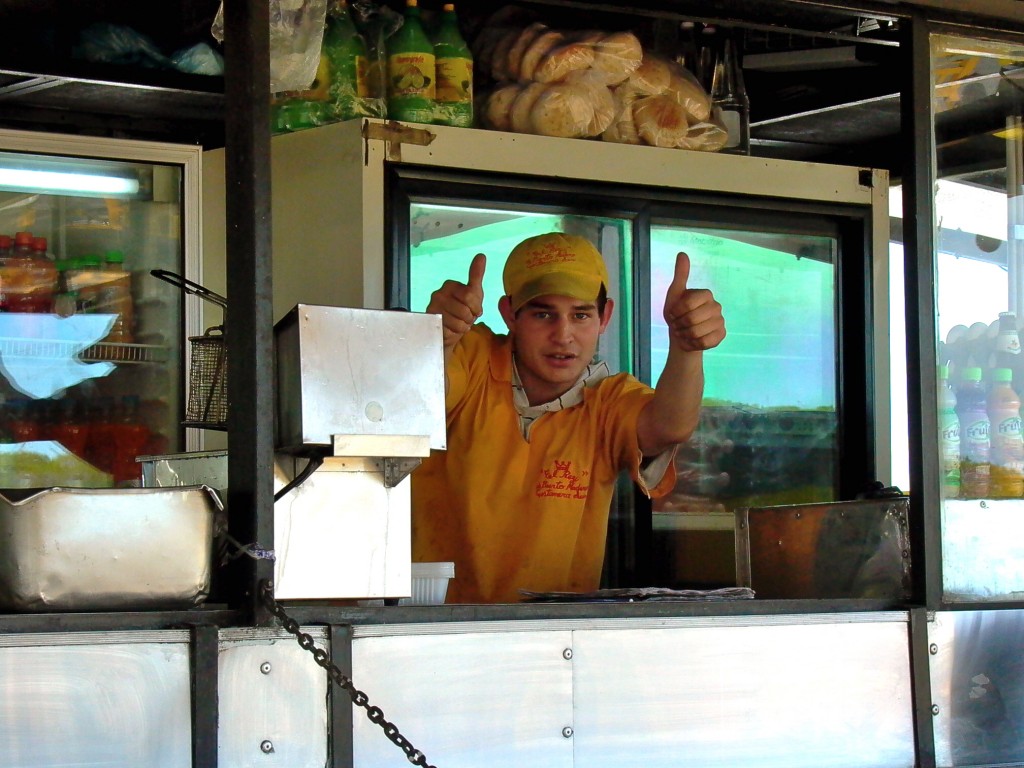

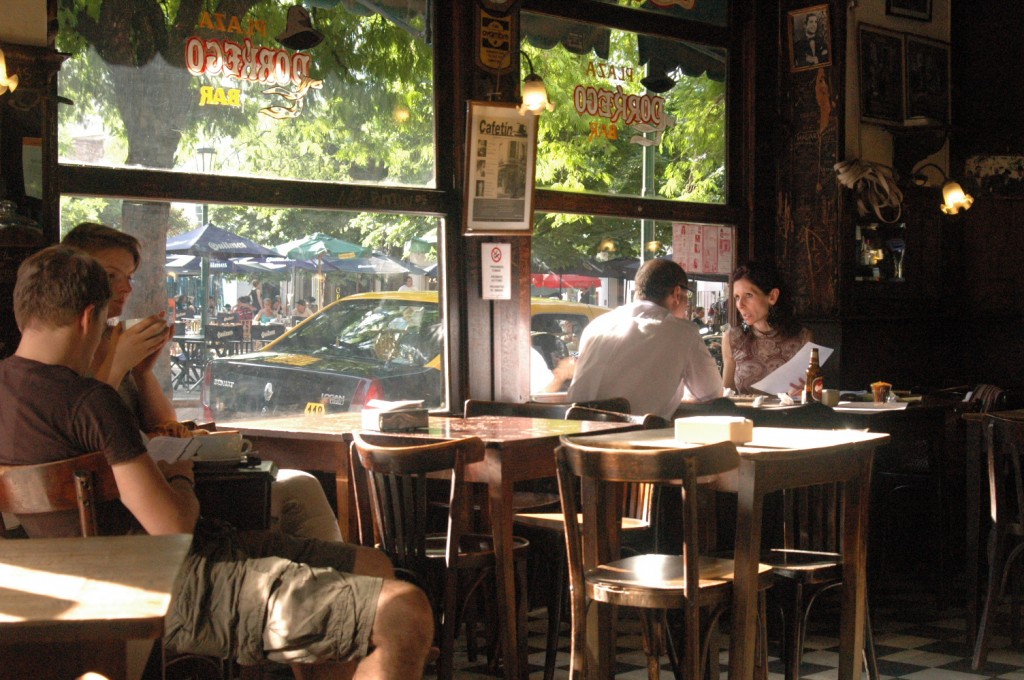
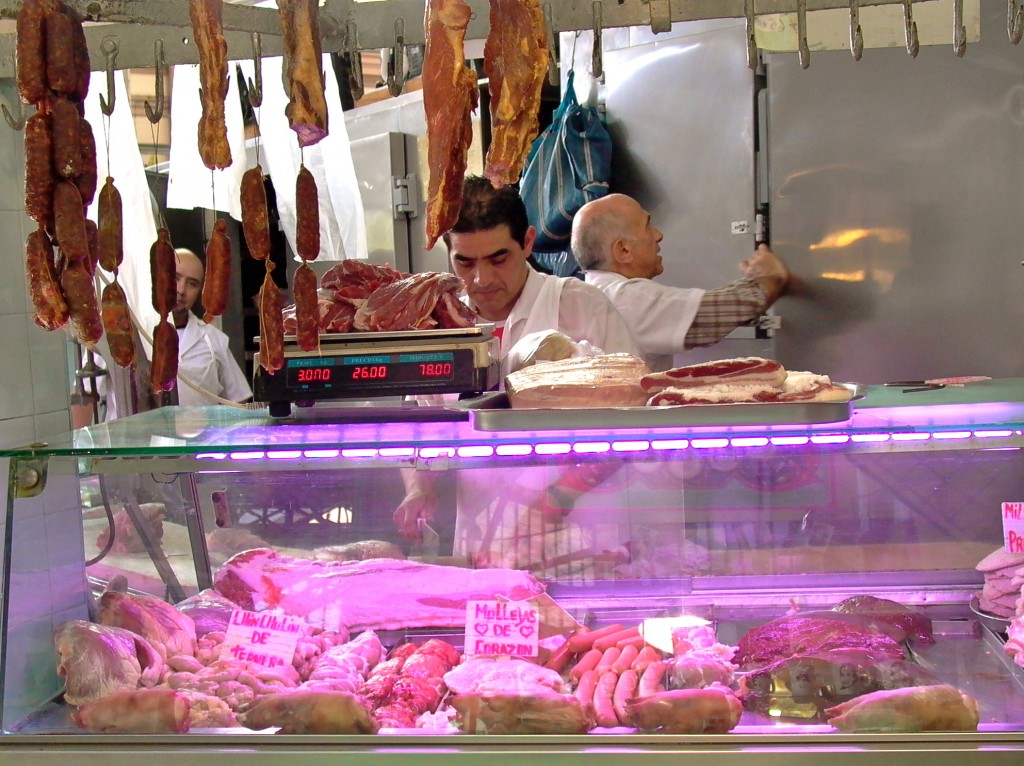

 Follow
Follow
 email
email
Julia, so far one of your best blogs ever! Beautiful photo’s, great writing….I’m looking for my passport now!
Gracias! Look for a follow-up and a great recipe for home-made empanadas…
The photos are wonderful. Thank you. I would love to go to Buenos Aires too.!!!!
I only follow two blogs and yours is easily my favorite. I agree, I think it is your best one so far!
How good to hear! Thanks, Bob!
I just discovered your blog and it’s wonderful. I love how you captured Buenos Aires, it truly sizzles with the flamenco and tango dancers on every street corner. I’m so glad you noted on the Bridge of the Woman, because it is such a unique landmark and not many people will mention it.
It’s reported that when the Spanish architect, Santiago Calatrava, was awarded the job, he asked to first be immersed in Argentina’s music as inspiration for the design.
Flamenco is from Spain, not from Argentina
Yes, and he is Spanish, but was inspired by tango for his commission to design the bridge in Buenos Aires.
My family visited BA in December, and while I agree wholeheartedly with your assessment of Don Julio and Fabbri gelato, I have to disagree somewhat with your assessment of their pizza. I grew up on Long Island, and BA was similar in that undistinguished pizzerias and red sauce joints are ubiquitous, despite loads of people of Italian descent. The most egregious was the “Kentucky Pizza” chain, whose name made our family laugh aloud. If you stuck to those types of places, your review is spot on.
My older son, however, made it his mission to find the best old-style pizzerias in the city. We made it to 3 of them, all dating to the 1930’s: Pirillo in San Telmo, Guerrin in San Nicolas, and El Cuartito, also in San Nicolas. All of them had terrific fugazza, which is a sauceless onion pie, and fugazetta, which adds cheese to the fugazza. Pirillo had the best fugazza of the 3. We ordered a range of slices at the other 2 pizzerias. I thought the cheese-less slice with anchovies and peppers at El Cuartito was possibly the best I ever had, while the Neopolitan at Guerrin was spectacular. The style is most similar to New Haven pizza, where cheese must be specified, and we imagine the rivalry between Guerrin and El Cuartito (who are around the corner from each other) to be like that of Sally’s and Pepe’s. We live in between New Haven and New York, and any of those pizzerias would do well in either city.
One more thing about traveling with my family – teenage boys don’t make great tango afficionados!
Thanks for this!
Fabulous post, Julia, both words and pictures. Thank you for creating it.
Happy to see a message from you, Nancy. I always enjoy your stories when I see them. Keep in touch.
Julia,
Wonderful! Hope to see you at the Northampton Farmers’ Market when you return.
John Spineti
Hopefully I’ll be lighting there this summer when my daughter is back from Nicaragua (that’s Gabriella, who you met at the market). Now, on the subject of that Abruzzese stuffed lamb breast you were torturing me with, I need more details! How about another go-round with the recipe by phone for now? I dream about it.
Only, you, Julia, could write such so beautifully about food not eaten. I digested every word. I will pass this on to Simone who lived in Buenos Aires for many years and goes back often. She never does talk much about the food. I can’t wait to go, but I want you to cook my dinner.
Who has written so beautifully? It is you! Maybe someday we’ll be able to go together. The wine was very good.
Hi Julia,
so enjoyed your blog and all the pictures-of course Nat would have architectural pictures of the bridge!
What a trip that would be-will save your blog so we don’t goto the “wrong places” to eat!
Do go into the first link in the first paragraph to read Nat’s post on street tango from the architect’s eye view.
Mama,
The only thing I don’t like about your blog is that it reminds me how much great food I’m missing from down here in Nicaragua. I can only savor the olive oil you send me and make sure to relish the fresh local mangos and passionfruit instead. Love!g
Soon, hijita, soon…